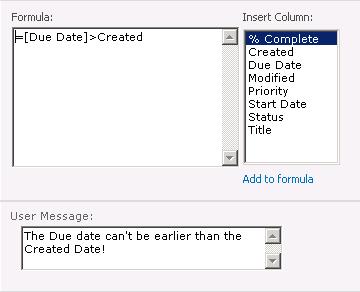One of the challenging tasks in .NET programming is changing the connection string on runtime. In this post, I will give you the simple step to complete this task.
Step 1: Create a SQL Conneciton form:
On the Solution Explorer panle, right click on your project, select Add->New Item. Select Window Form. Name it SLQConnection, then click OK. Design it as the figure bellow:
Step 2: Create an app.config file
On the Solution Explorer, right click on your project, select Add->New Item. On the dialog appeared, click on Application Configuration File, name it app.config. Click OK
Open app.config file, modifying it as the figure bellow
Step 3: Coding
On the SQLConnection.cs file, add the following code:
public void updateConfigFile(string con)
{
XmlDocument XmlDoc = new XmlDocument();
//Road the Config file
XmlDoc.Load(AppDomain.CurrentDomain.SetupInformation.ConfigurationFile);
foreach (XmlElement xElement in XmlDoc.DocumentElement)
{
if (xElement.Name == "connectionStrings")
{
//setting the connection string
xElement.FirstChild.Attributes[2].Value = con;
}
}
//write the connection string in app.config file
XmlDoc.Save(AppDomain.CurrentDomain.SetupInformation.ConfigurationFile);
}
Double click on Connect button of the Form created in step 1
Add the following code to the On_Clikc event of the button
StringBuilder Con = new StringBuilder("Data Source=");
Con.Append(txtServerName.Text);
Con.Append(";Initial Catalog=");
Con.Append(txtDBName.Text);
Con.Append(";Integrated Security=SSPI;");
string strCon = Con.ToString();
updateConfigFile(strCon);
//create a new connection
SqlConnection conn = new SqlConnection();
ConfigurationManager.RefreshSection("connectionStrings");
conn.ConnectionString = ConfigurationManager.ConnectionStrings["Conn"].ToString();
//get data from a table to test the connection
SqlDataAdapter da = new SqlDataAdapter("select * from Users", conn);
DataTable dt = new DataTable();
da.Fill(dt);
if (dt.Rows.Count > 0)
{
MessageBox.Show("Connection successful", "Notice", MessageBoxButtons.OK, MessageBoxIcon.Exclamation);
}
else
{
MessageBox.Show("Connection failed", "Notice", MessageBoxButtons.OK, MessageBoxIcon.Exclamation);
}
To get the connection string on runtime, use the following code
string cnstr = ConfigurationManager.ConnectionStrings["Conn"].ToString();
Now, test it!
Hope this helps!
Step 1: Create a SQL Conneciton form:
On the Solution Explorer panle, right click on your project, select Add->New Item. Select Window Form. Name it SLQConnection, then click OK. Design it as the figure bellow:
Step 2: Create an app.config file
On the Solution Explorer, right click on your project, select Add->New Item. On the dialog appeared, click on Application Configuration File, name it app.config. Click OK
Open app.config file, modifying it as the figure bellow
Step 3: Coding
On the SQLConnection.cs file, add the following code:
public void updateConfigFile(string con)
{
XmlDocument XmlDoc = new XmlDocument();
//Road the Config file
XmlDoc.Load(AppDomain.CurrentDomain.SetupInformation.ConfigurationFile);
foreach (XmlElement xElement in XmlDoc.DocumentElement)
{
if (xElement.Name == "connectionStrings")
{
//setting the connection string
xElement.FirstChild.Attributes[2].Value = con;
}
}
//write the connection string in app.config file
XmlDoc.Save(AppDomain.CurrentDomain.SetupInformation.ConfigurationFile);
}
Double click on Connect button of the Form created in step 1
Add the following code to the On_Clikc event of the button
StringBuilder Con = new StringBuilder("Data Source=");
Con.Append(txtServerName.Text);
Con.Append(";Initial Catalog=");
Con.Append(txtDBName.Text);
Con.Append(";Integrated Security=SSPI;");
string strCon = Con.ToString();
updateConfigFile(strCon);
//create a new connection
SqlConnection conn = new SqlConnection();
ConfigurationManager.RefreshSection("connectionStrings");
conn.ConnectionString = ConfigurationManager.ConnectionStrings["Conn"].ToString();
//get data from a table to test the connection
SqlDataAdapter da = new SqlDataAdapter("select * from Users", conn);
DataTable dt = new DataTable();
da.Fill(dt);
if (dt.Rows.Count > 0)
{
MessageBox.Show("Connection successful", "Notice", MessageBoxButtons.OK, MessageBoxIcon.Exclamation);
}
else
{
MessageBox.Show("Connection failed", "Notice", MessageBoxButtons.OK, MessageBoxIcon.Exclamation);
}
To get the connection string on runtime, use the following code
string cnstr = ConfigurationManager.ConnectionStrings["Conn"].ToString();
Now, test it!
Hope this helps!


 10:55 PM
10:55 PM
 Unknown
Unknown









